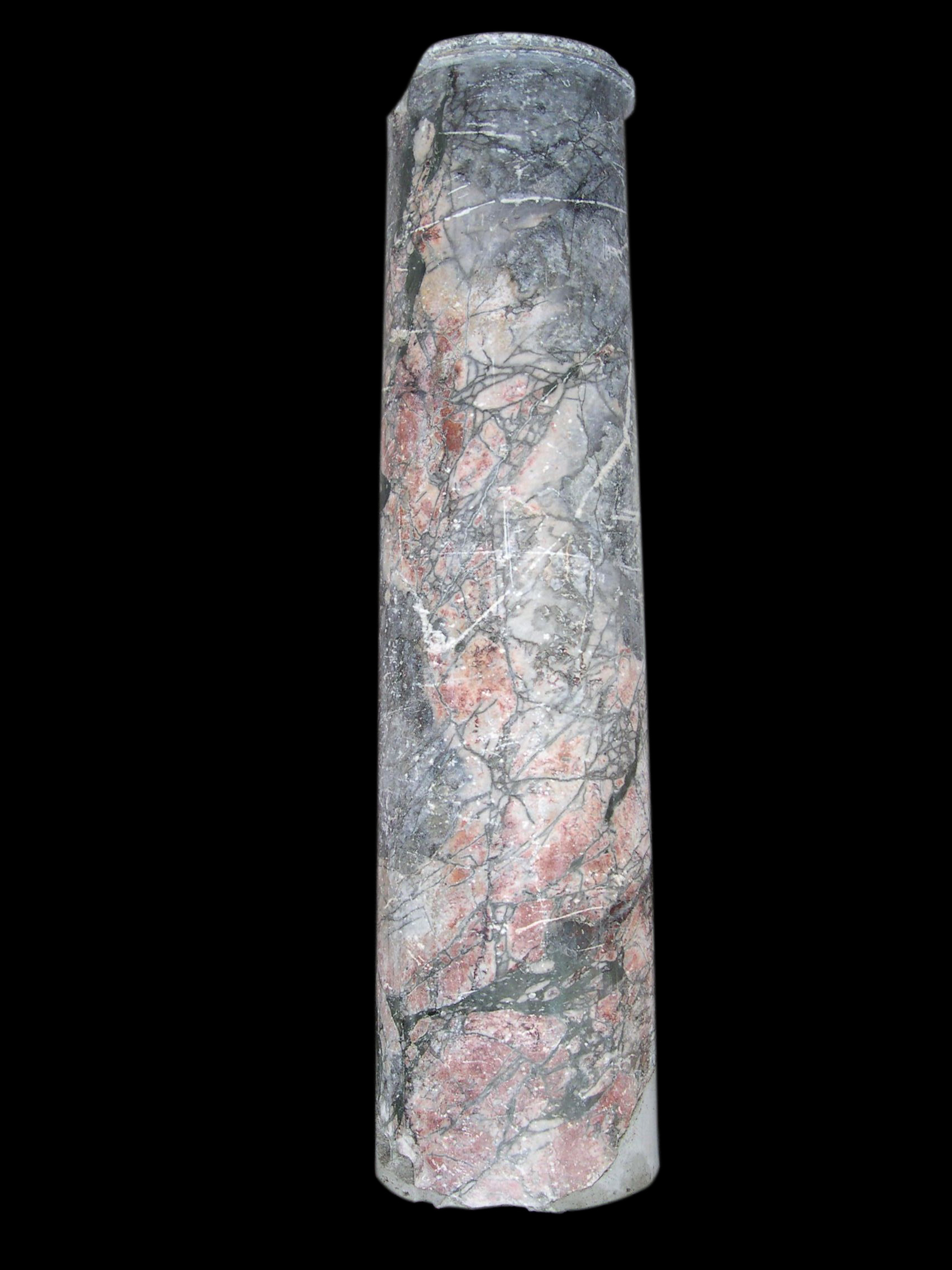“Africano” marble (Marmor Luculleum)
H. 183 cm; upper diam. 45 cm; intermediate diam. 47 cm
Imperial age (II-III century AD)
Plain column shaft
Plain column shaft carved out of a single block of “Africano” marble (Marmor Luculleum), devoid of the inferior section with the lower end. The marble block is of high quality: it shows whitish crystal pebbles alongside other inclusions of larger size and of a deep red colour, set within a greyish background. The surface is chipped and slightly abraded. The preserved upper end is carved with a small torus (h. 2,8 cm, projecting 1,5 cm), an astragal (h. 0,8 cm) and a cavetto (h. 1,5 cm, projecting 1 cm). In Rome, columns made of “Africano” marble had been extensively used from the late Republican period throughout the whole of the imperial age. Such marble was labelled “Africano” by the Roman stonemasons simply because of its predominant strong colours and sharp chromatic contrasts, yet after Gnoli’s identification with the Marmor Luculleum it is now known that it was quarried in Asia Minor, not far from modern Izmir. This stone was one the first coloured marbles to be imported in Rome as early as the middle of the I century BC, it was then most employed in the period between Augustus and the Antonine emperors, and at the time of Diocletian it still recurred in the Edict on Prices as one of the most expensive qualities of marble. We find it utilized for columns, as for example in the upper order of the cella of Apollo Sosianus’ Temple, as well as for decorative panels and thresholds, as in the Antonine phase of the Capitolium at Ostia.







